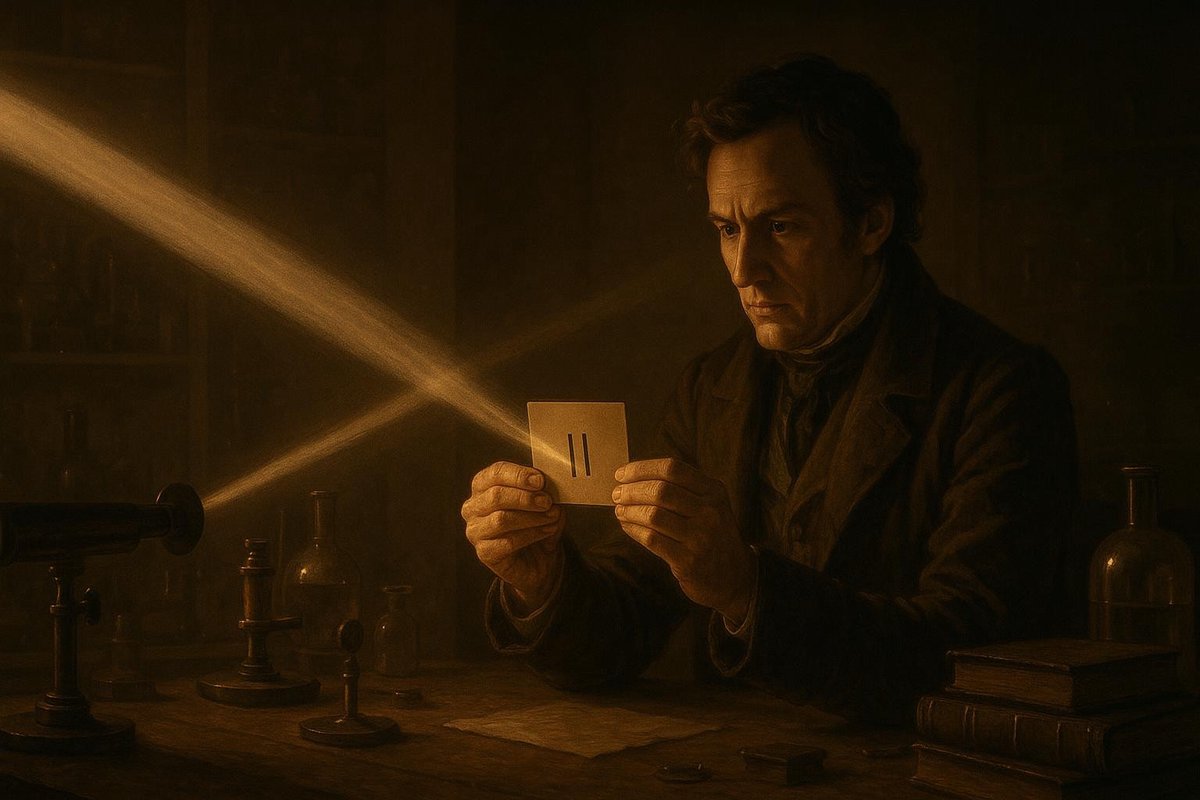
Curiosity Unleashed: Thomas Young’s Relentless Pursuit
In the early 1800s, amidst the candle-lit rooms of London, Thomas Young was captivated by the mysterious dance of light. Many wondered how light could sometimes act like a wave and, at other times, a particle. This puzzling behavior had left the scientific community divided, and it was Young’s relentless curiosity that led him to a groundbreaking experiment.
Before Young’s work, Isaac Newton’s corpuscular theory of light, which suggested that light was made of particles, reigned supreme. Yet, people like Christiaan Huygens argued otherwise, promoting wave theory. Young was undeterred by the prevailing skepticism and sought to uncover the truth.
The Double-Slit Experiment: Setup & Method
Imagine a dimly lit room, beams of light passing through narrow slits. This was Young’s setup for the famous double-slit experiment. He carefully crafted a card with two thin, parallel slits, allowing light to pass through and cast an image on a screen beyond.
- Created a card with two slits.
- Projected light through these slits onto a screen.
- Observed interference patterns on the screen.
To Young’s astonishment, the light produced a pattern of alternating bright and dark bands, reminiscent of water waves interacting. This was the telltale sign of interference, a hallmark of wave behavior.
Results & Reactions: Challenging the Establishment
Young’s results were revolutionary. The interference patterns indicated that light behaved as a wave, challenging the long-held particle theory. The scientific community, however, was not easily swayed. Many clung to Newton’s prestige and dismissed Young’s findings.
- Interference patterns revealed wave behavior.
- Generated skepticism from particle theory proponents.
- Sparked debate among scientists.
While some peers recognized the significance of Young’s work, others remained adamant in their skepticism. Yet, Young’s findings laid the foundation for the wave-particle duality of light, a concept further explored by Albert Einstein and Niels Bohr.
Implications: A New Dawn for Physics
The implications of Young’s experiment extended far beyond his lifetime, reshaping our understanding of the nature of light and reality itself. The wave-particle duality became a cornerstone of quantum mechanics, influencing everything from atomic theory to modern technology.
- Pioneered the study of wave-particle duality.
- Laid groundwork for quantum mechanics.
- Influenced modern scientific thought and technology.
Young’s experiment was not just a scientific feat; it was a testament to the power of curiosity and perseverance in the face of skepticism. It reminds us that challenging the status quo can lead to profound discoveries.
Fuel Someone Else’s Curiosity
Thomas Young’s journey teaches us the value of questioning and exploring the unknown. Share this story with others and inspire a new generation of curious minds to challenge conventions and seek the truth behind the mysteries of the universe.

Leave a Reply